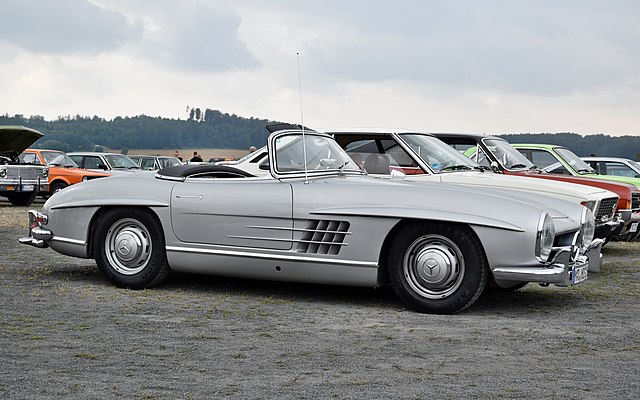
The Mercedes-Benz 300 SL Roadster, produced between 1957 and 1963, stands as a beacon of automotive innovation, design excellence, and performance that transcends its era to remain a sought-after classic. With its distinctive styling, pioneering technology, and racing pedigree, the 300 SL Roadster not only captured the imagination of car enthusiasts during its production years but continues to be revered as one of the most collectable classic cars in the world.
Genesis and Evolution
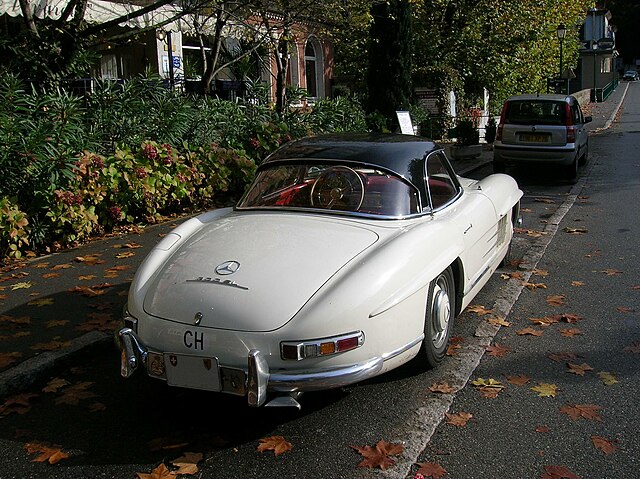
The story of the Mercedes-Benz 300 SL Roadster begins with its predecessor, the 300 SL Gullwing, a car that revolutionized sports car design with its unique gull-wing doors and was initially introduced as a coupe in 1954.
The success and acclaim of the Gullwing coupe set the stage for the creation of the Roadster version, which Mercedes-Benz aimed to refine for increased comfort and usability without compromising the performance characteristics that had made the coupe a legend.
Unlike the Gullwing, the Roadster was designed with conventional doors, improving accessibility and making it more practical for everyday use. This transition from coupe to roadster also involved significant engineering efforts to retain the structural rigidity lost by removing the roof, leading to innovations in the car’s chassis and body construction.
The result was a vehicle that not only matched the coupe’s aesthetics but also introduced enhancements that made it even more desirable to a broader audience.
The introduction of the 300 SL Roadster marked a pivotal moment in Mercedes-Benz’s history, showcasing the brand’s commitment to engineering excellence and its ability to adapt and evolve its iconic models to meet the changing needs and desires of its customers.
Design and Aesthetics
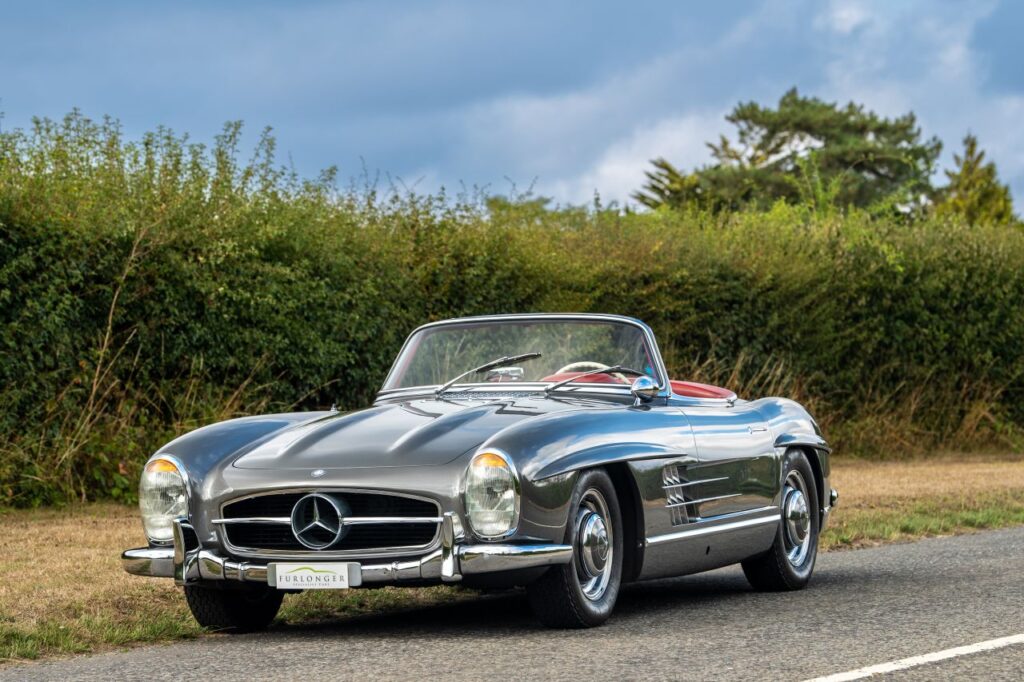
The Mercedes-Benz 300 SL Roadster is immediately recognizable for its graceful and timeless design. Its long hood, distinctive doors, and sleek, flowing lines exude elegance and speed, capturing the essence of a classic sports car. The design was not only about aesthetics but also function, with aerodynamic considerations playing a crucial role in achieving the car’s impressive performance.
The interior of the Roadster was a blend of luxury and sportiness, featuring high-quality materials and craftsmanship. Leather seats, a beautifully appointed dashboard, and chrome accents created an environment that was both comfortable and exhilarating, perfectly complementing the car’s exterior design.
Moreover, the convertible top mechanism of the Roadster was designed with practicality in mind, allowing drivers to enjoy open-air motoring with ease or to be sheltered in a cabin that offered excellent weather protection when needed. This versatility added to the Roadster’s appeal, making it a suitable choice for both leisurely drives and spirited motoring.
Performance and Engineering
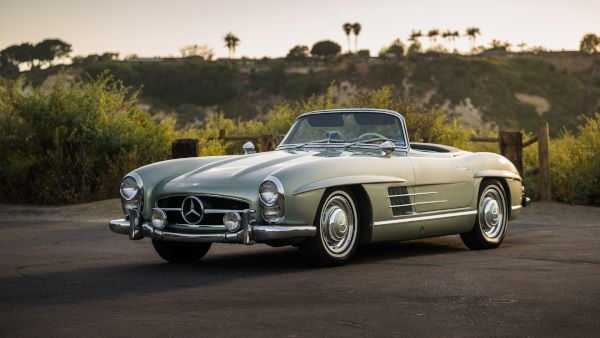
At the heart of the Mercedes-Benz 300 SL Roadster was its advanced 3.0-liter inline-six engine, which featured direct fuel injection – a groundbreaking technology at the time that contributed to the car’s exceptional performance.
This engine allowed the Roadster to achieve top speeds that were unparalleled for a production sports car of its era, making it a favorite among racing enthusiasts and a formidable competitor on the track.
The Roadster’s handling and driving dynamics were also subjects of praise. Its sophisticated suspension system, combined with precise steering and a well-balanced chassis, provided a driving experience that was both exhilarating and secure.
These performance features ensured that the Roadster was not only fast but also enjoyable to drive, whether on winding country roads or at high speeds on the autobahn.
Mercedes-Benz’s focus on innovation extended to the Roadster’s safety features, which included advanced braking systems and a robust frame design. These elements made the 300 SL Roadster ahead of its time in terms of providing a safe driving experience, further solidifying its status as a marvel of automotive engineering.
Racing Heritage
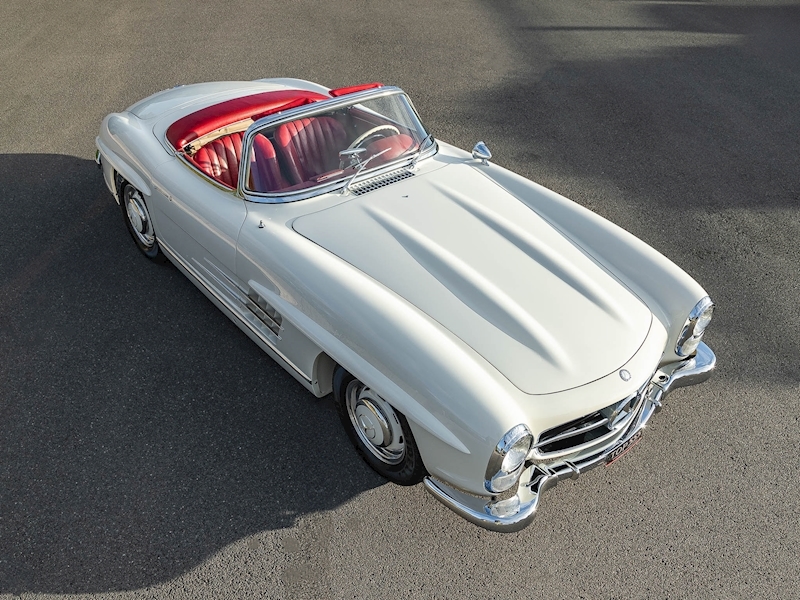
The Mercedes-Benz 300 SL, both in its Gullwing and Roadster forms, has a storied history in motorsport, having achieved numerous victories and setting records that contributed to its legendary status. The car’s racing heritage began with the Gullwing’s success in grueling competitions such as the Le Mans 24 Hours and the Carrera Panamericana.
The Roadster continued this tradition of excellence in racing, benefiting from the technological and engineering advancements that had been developed through Mercedes-Benz’s involvement in motorsport.
While the Roadster was more often seen as a luxurious sports car for the road, its performance and engineering were rooted in the brand’s racing success, giving it credibility and prestige among car enthusiasts and collectors.
Legacy and Collectibility
Today, the Mercedes-Benz 300 SL Roadster is celebrated as one of the most iconic and desirable classic cars. Its blend of beauty, performance, and innovation has ensured its place in the pantheon of automotive legends. Collectors and enthusiasts around the world seek out the Roadster, not only for its historical significance but also for the unparalleled experience it offers as a driving machine.
The value of the 300 SL Roadster has consistently appreciated over the years, reflecting its rarity, desirability, and status as a symbol of automotive excellence. Whether showcased in a collection or enjoyed on the open road, the Roadster continues to embody the spirit of innovation and passion that defines Mercedes-Benz.
In conclusion, the Mercedes-Benz 300 SL Roadster (1957 – 1963) represents a pinnacle of classic car design and engineering. Its lasting impact on the automotive world is a testament to Mercedes-Benz’s vision, craftsmanship, and dedication to pushing the boundaries of what is possible in a sports car.
